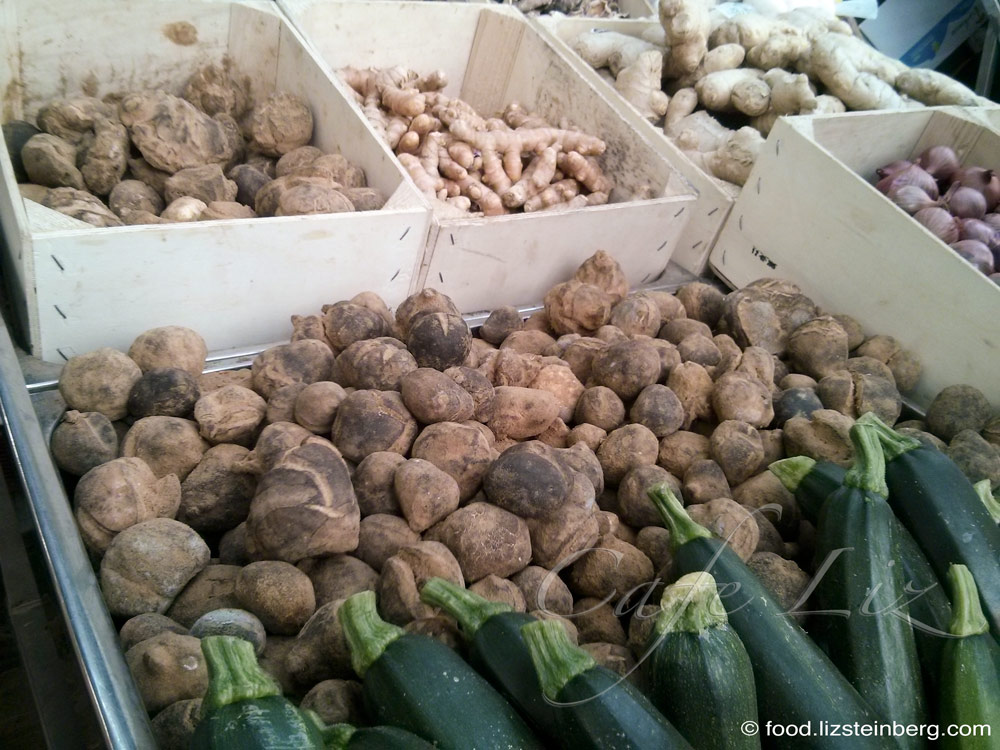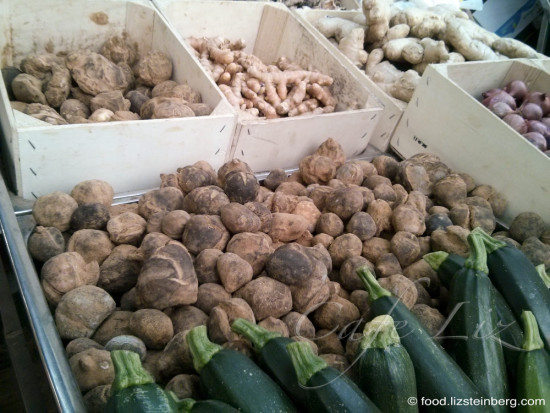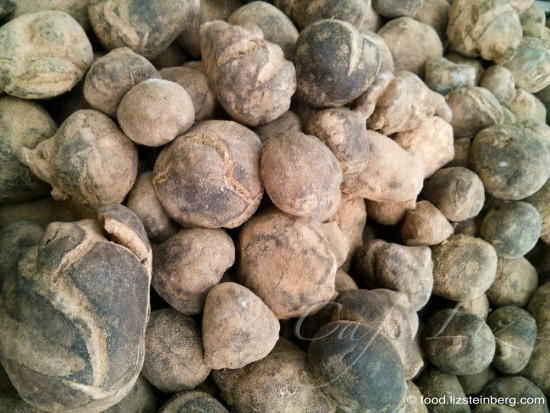Desiccated donkey dung. How’s that for a description of food? Does it make you want to taste it? Eat it? I have to say, when I first heard that description – in reference to the truffles that grow in sands around the Middle East, including Israel’s Negev desert, it caught my attention and made me laugh, and I haven’t forgotten it since. That was years ago.
If you’re not familiar with Middle Eastern desert truffles, then these probably aren’t the truffles you’re thinking of.
They’re not the exquisite Italian and French truffles that can fetch $14,000 a kilogram. No, these are a different member of the truffle family, known as terfez in Morocco, selling for a more modest 150-300 shekels a kilogram (about $38-$75) in Israel’s markets right now. Is it worth the price? We’ll get to that question later.
Israel’s truffles are generally foraged in the desert, popping up after a particularly good rainy season. (A few years ago, some friends and I had been hoping to go hunting, and we even had a expert forager lined up to guide us, but that fell through due to, well, life.) In Israel, these truffles aren’t particularly well known among the masses, and are mostly the provence of the Bedouin who live in the Negev, and Moroccan Jews.
Superstition holds that desert truffles appear where lightening strikes the ground, as the round truffles tend to create little hills of cracked earth above them as they swell and grow. These mushrooms are mentioned in the Babylonian Talmud, where rabbis concluded that they appear spontaneously in the soil overnight. Traditional preparations include roasting them in a fire, and frying them with scrambled eggs. (source)
The tail end of the season is around now, which means that for some Moroccan Jewish families, these truffles are a Passover specialty, often served in luscious stews with good cuts of meat. (Here, chefs with Moroccan roots describe family dishes, in Hebrew.) One chef, Avi Biton of Adora, recounts family visits to Gaza – back when such a thing was possible – to buy imported, canned terfesh, mainly to be eaten on holidays.
Shopping in Gaza may not be an option given the current geopolitical situation, but these truffles are available in Israel’s markets in time for the Passover holiday. Mine came from Carmella in the Carmel Market, for a very reasonable 150 shekels a kilo (there they are, next to the zucchini in the top photo), while friends and acquaintances have been encountering them at markets around the country – and inevitably confusing them for the more expensive, “real” truffles.
So, are they worth the cost? They may be a member of the truffle family, but 150 shekels a kilo is pretty steep for what’s ultimately an elegant-tasting root vegetable. The taste is somewhere between a mushroom and a potato, with a hint of Jerusalem artichoke, but nowhere near strong enough to give a truffle essence from a mere shaving, as is done with classic European truffles.
That said, if you happen to find them at a reasonable price – or if you’re in the mood to splurge – these could be an unusual star on your Passover table. I cooked mine into a rich root vegetable stew. The quantity of truffles was limited by my budget – I spent 22 shekels on 3 medium-sized truffles. You could use a larger ratio of truffles to other vegetables if you’d like.
For a side dish serving four:
- olive oil
- 2 bay leaves (plus extra to garnish)
- 3 fresh thyme sprigs (plus extra to garnish)
- 3 truffles (about 150 grams), washed of all sand (crucial!), peeled, and thinly sliced
- 1 onion, sliced into rings
- 2 medium potatoes, sliced into chunks
- 1 small butternut squash, or 1/2 a large one, sliced into chunks
- 1/4 cup wine
- 1 teaspoon sea salt, or to taste
- pinch pepper
Put a thick-bottomed pot onto a medium flame, and pour enough olive oil into the pot to cover the bottom. Add the onions, truffles, bay leaves and thyme, and let simmer until lightly browned.
Add the potatoes and squash, and let brown slightly as well, stirring to keep from sticking. Add the wine, salt, pepper and 1/4 cup water, and cover the pot. Let simmer on a low flame until the vegetables are cooked through, stirring as needed to prevent sticking.
Serve with extra sprigs of thyme and bay leaves.
Another possible serving suggestion would be to pan-fry the truffles separately and serve them on top of the potatoes and squash, to make them the true star of the show.







